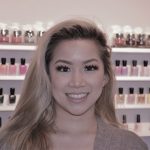 Important Information About Waxing
Important Information About Waxing
This section is information provided as a courtesy to our beauty followers. We presently do not offer waxing services.
To ensure a successful waxing experience, please read and follow these instructions. Review the section Keep in Mind below for after-care considerations and tips.
Waxing is never done if you have taken Accutane within the past year, and is not recommended if you are currently taking Retin A, Renova, Differin, or skin-thinning acne medications. Please read your medication labels and warnings carefully and consult your physician before waxing if you are taking any of these medications or using any topical cream that contains any of these medications. Individuals can react differently to these medications and waxing may be performed if proper patch testing is completed. Common names for these drugs include Accutane, Adapalene, Alustra, Avage, Avita, Differin, Isotretinoin, Renoval, Retin A, Tazarac, Tazarotene, and Tretinoin.
Please inform your service provider if you are currently taking or using any of the following. These products can make the skin more sensitive, and thin sensitive skin is more vulnerable to lifting and sensitivity during waxing:
- Other acne medications not listed above
- Bleaching agents for hair
- Bleaching agents for pigmentation on skin such as Hydraquinone or Trilumena
- Previous chemical depilatories such as Nair
- Benzoyl peroxide (ProActive)
- Alpha hydroxy acids (glycolic acid, lactic acid)
- Oral or topical antibiotic
- Retinol
- Salicylic acid
- Other exfoliants
Keep in Mind
- Sunburned, irritated or areas with open skin cannot be waxed.
- Moles cannot be waxed.
- You must wait a minimum of seven (7) days before waxing after a light chemical peel or microdermabrasion.
- Waxing cannot be performed if you have been to a tanning booth the same day.
- Waxing cannot be performed if you have had laser skin resurfacing within the past year.
- Waxing cannot be performed if you have had a physician-administered peel within the past two (2) years.
- If irritation should occur, an antibiotic ointment is recommended such as Neosporin to keep the area continually moist to reduce the chance of infection and scabbing.
- Avoid suntanning and tanning booths for two days following a waxing treatment. Extra precaution should be taken if using tanning accelerators. Wait two to three days to wax before or after tanning with accelerators.
- Avoid hot baths for 24 hours following a body waxing treatment.
- Avoid using abrasives for 24 hours following any waxing treatment.
- Avoid using deodorant for 24 hours following an underarm waxing treatment.
- Women may experience extra sensitivity to waxing up to a week prior to the beginning of their menses.
Frequently Asked Questions about Waxing and Skin Services
Who will be waxing me?
A licensed esthetician trained in the art of waxing and sugaring.
What is the distinction between certain wax services?
- Trio – removes hair around the lips, chin and brows.
- Bikini wax – removes hair showing outside of your bathing suit or underwear.
- Extended bikini – goes deeper than a bikini leaving a more defined triangle.
- Betweenie – a bikini wax but goes farther in on the sides and more off the top. This does not include the labia or between the cheeks.
- Brazilian wax – removes all hair underneath the belly button continuous to the backside. Some people leave a strip or triangle on the top.
Do you Wax Men?
Yes, we offer waxing services specifically for men including back, neck and shoulder areas.
How long of hair should I have?
Ideally the hair needs to be at least a 1/4-inch to a 1/2-inch long to be effectively waxed. This is usually about 2 weeks of hair growth after shaving.
How long will I stay red?
The skin may stay red and tender anywhere from one to 24 hours depending on your skin’s sensitivity. We use hard wax that reduces redness and irritation for more sensitive areas.
Will my wax service hurt?
After just one waxing session your regrowth will be thinner, finer and softer, and with continued waxing you may even experience significant reduction in regrowth. These factors make it easier and less painful if you keep up with regular waxes. To improve your first experience, avoid caffeine and alcohol 24 hours before your wax and take a mild anti-inflammatory medication such as Ibuprofen one hour before your appointment. Most people find waxing to be unobjectionable, and our use of hard wax makes that true even for people with sensitive skin.
Are there any age restrictions?
You must be 18 years of age or have a parental approval/signature to receive waxing services.
Can I get waxed while I’m on my period?
You can still get waxed while you are on your period as long as you wear a tampon.
What about Ingrown hairs?
We advise all individuals who receive body waxing to exfoliate. If you have any questions please ask your technician during your appointment.
Can I get waxed when I’m pregnant?
Waxing during your pregnancy is not harmful to you or your baby, although your skin may be a little more sensitive during this special time. We recommend asking your doctor for specific concerns.
Is waxing sanitary?
We will not “double dip” or reuse our wax sticks even for simple procedures, and your technician will observe proper tool and hand hygiene at all times. We encourage you to ask your technician if you have any questions about their technique and to report your concerns to us. Our policies and post-care instructions for you are intended to protect you from infection.
How long will my appointment be?
A Brazilian for women will take up to 30 minutes. We are highly experienced in speed waxing. Full legs or back and chest may take up to 45 minutes.
What should I do to prepare for my wax?
It is always helpful to exfoliate and take a mild anti-inflammatory medication such as ibuprofen before a wax service. This will help to reduce skin redness and swelling. Also, avoid caffeine and alcohol 24 hours before your waxing service, they may increase your blood flow and make intensify unpleasant elements of the experience. Waxing is a very personal service but you are in good hands! Our licensed estheticians are very experienced, friendly and professional. They will guide you through the process and make you feel comfortable and happy.
What is sugaring?
Sugaring is an ancient middle eastern hair removal process that uses a natural paste – made of sugar, water, and lemon juice – to remove the hair follicle from the root, making it the most natural form of hair removal. It contains no chemicals and because it is a blend of natural ingredients, it reduces the possibility of side effects. Sugaring is gentle on the skin: the lukewarm sugar paste adheres to the hair and the water in the mixture hydrates the follicle ensuring only the hair is removed, it does not stick to the skin or live skin cells. Unlike waxing, the sugar paste is removed in the same direction as hair growth. Sugaring is suitable for all skin types and may even improve eczema and psoriasis by removing the top layer of dead skin and encouraging healing of the skin underneath.
Other benefits to sugaring include:
- Effective as a prevention for ingrown hairs
- Extracts all hair colors and textures
- Being gentle on the skin means it can be reapplied for missed hairs
- Improved skin tone and texture
- Water soluble for an easy clean up
Are there contraindications to waxing?
There are specific things to be aware of before, during and after your waxing experience. You are strongly encouraged to read and follow our Important Information about Waxing guidelines to improve your waxing experience.
